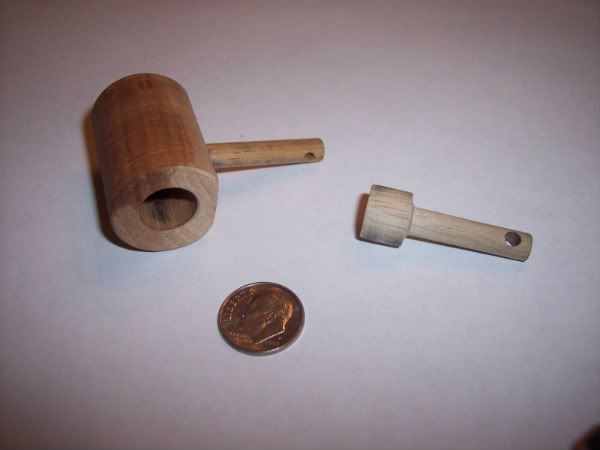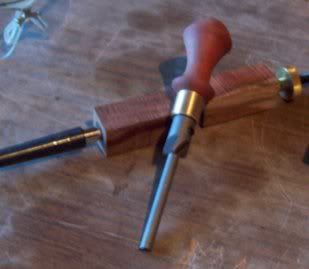Hi.
I have never turned wood on my metal lathe, or for that fact never turned wood!.
I am currently making a tool grinding jig and want to make a round wooden handle for a shaft that turns the feed to the grinder. And I want it to look nicely finished. I am blinging this tool jig up!.
I want It ½ inch thick x 3 dia with a ¾ boss dia x ¾ long or wide with a 7mm bore, it will be connected to a steel rod.
Questions. Can I use HHS bits if so any idea on the angles a sketch would be nice.
What type of wood that can be easily purchased from a local hardware store, and why that type of wood?
Speeds or SFM ?
I have researched this subject and know that they use chisels which I do not own but could easily be made and if this is the best way to so be it!.
Any precautions with the wood chips or dust relative to the machine ware and tool hygiene, I know wood holds moisture so I would assume being clean would be an advantage. Any tips?
Lastly joining wood to metal meaning the steel rod shaft to the wood hub.
All your advice Is welcome. Thank you. Anthony.
I have never turned wood on my metal lathe, or for that fact never turned wood!.
I am currently making a tool grinding jig and want to make a round wooden handle for a shaft that turns the feed to the grinder. And I want it to look nicely finished. I am blinging this tool jig up!.
I want It ½ inch thick x 3 dia with a ¾ boss dia x ¾ long or wide with a 7mm bore, it will be connected to a steel rod.
Questions. Can I use HHS bits if so any idea on the angles a sketch would be nice.
What type of wood that can be easily purchased from a local hardware store, and why that type of wood?
Speeds or SFM ?
I have researched this subject and know that they use chisels which I do not own but could easily be made and if this is the best way to so be it!.
Any precautions with the wood chips or dust relative to the machine ware and tool hygiene, I know wood holds moisture so I would assume being clean would be an advantage. Any tips?
Lastly joining wood to metal meaning the steel rod shaft to the wood hub.
All your advice Is welcome. Thank you. Anthony.





























![DreamPlan Home Design and Landscaping Software Free for Windows [PC Download]](https://m.media-amazon.com/images/I/51kvZH2dVLL._SL500_.jpg)










![MeshMagic 3D Free 3D Modeling Software [Download]](https://m.media-amazon.com/images/I/B1U+p8ewjGS._SL500_.png)









![TurboCAD 2020 Designer [PC Download]](https://m.media-amazon.com/images/I/51UKfAHH1LL._SL500_.jpg)



















